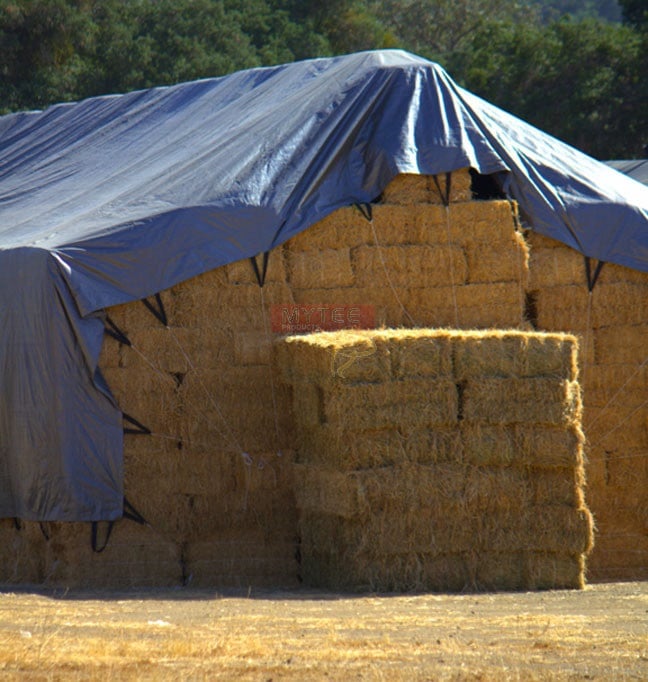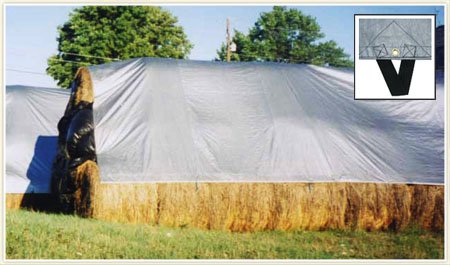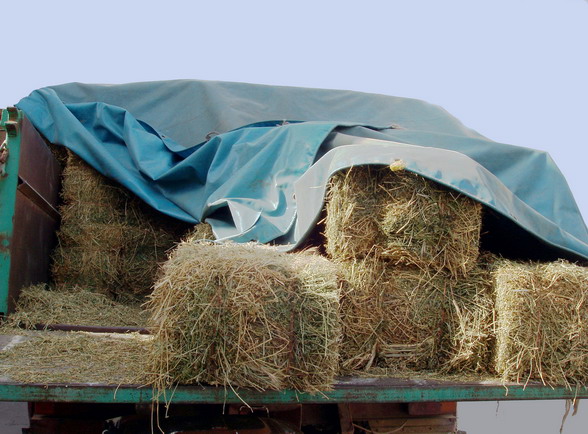Hay tarps protect baled and rolled hay from the weather, thereby reducing the likelihood of bacteria growth, mold growth, and potential spontaneous combustion. However, hay farmers are not the only ones who benefit from these tarps. In other parts of the country, hay tarps are also used to protect seed cotton as well as post-harvest alfalfa.
The only caution with tarping seed cotton pertains to the materials used to provide UV protection. HALS and Carbon Black stabilizers used for UV protection are harmless to seed cotton. Conversely, BHT stabilizers are another matter. Farmers are better off avoiding hay tarps treated with BHT stabilizers unless they do not mind the seed cotton turning yellow.

Moisture Protection
Prior to the introduction of mechanized harvesting equipment, there was little need to store seed cotton prior to sending it for ginning. The manual harvesting process was simply not fast enough to keep up with the speed of cotton gins, so farmers could harvest and immediately transport their crop. Things have changed since those days. Now, seed cotton must be harvested and stored in modules until they are ready to be transported.
As with hay, one of the primary enemies of harvested seed cotton is moisture. Moisture decreases the value of the cotton by proportionally increasing the cost and time of ginning. If a cotton gin has to spend more time processing raw product, they will pay less for that product. Moisture also reduces the overall yield of the ginning process by causing discoloration.
A cotton farmer wanting to make the most of his harvest needs to keep moisture away. This means tarps should cover the tops of modules and at least a portion of the sides. Hay tarps are perfect for this task. They are available in a in a variety of sizes along with appropriate anchor pins to keep them in place.
Protection from Wind and Sun
Seed cotton has two additional enemies who are kinder to hay – wind and sun. As seed cotton is very light in its unprocessed form, it is subject to damage from the wind even when stored as modules. A moderate, steady breeze can gradually reduce the size of the module by blowing away the material on the exterior surface. Think about soil erosion as an example to this situation
Sun can be a problem for seed cotton by causing it to dry prematurely. In other words, some moisture content is required to prevent damage to seed cotton prior to ginning. Exposing a module to direct sunlight for an extended period of time does reduce the size of the yield by drying out the outer layers of cotton.
Applying Tarps
Applying a hay tarp to a cotton module is by no means a difficult task. It is applied the same way it would be used for hay. Perhaps the only difference is the fact that cotton modules are rarely stacked three and four high like hay, while they wait to be transported. Cotton modules are generally covered individually in the field or stacked side-by-side in a staging area.
Knowing this, the tarp should cover the entire top surface of the module stack and as much of the sides as possible. If the sides cannot be completely covered, the wind facing side takes priority and should be protected. Tarps can be secured with pins or with ropes tied around the perimeter of the module stack.
Protecting harvested crops is as important to a cotton farmer as is to a hay farmer. At Mytee Products, we encourage farmers to choose and invest wisely in their hay tarps. The old adage that you ‘get what you pay for’ applies in most cases and heavy-duty tarps are no exception. For maximum yield and longevity, an investment in quality now will pay off over the long term.










